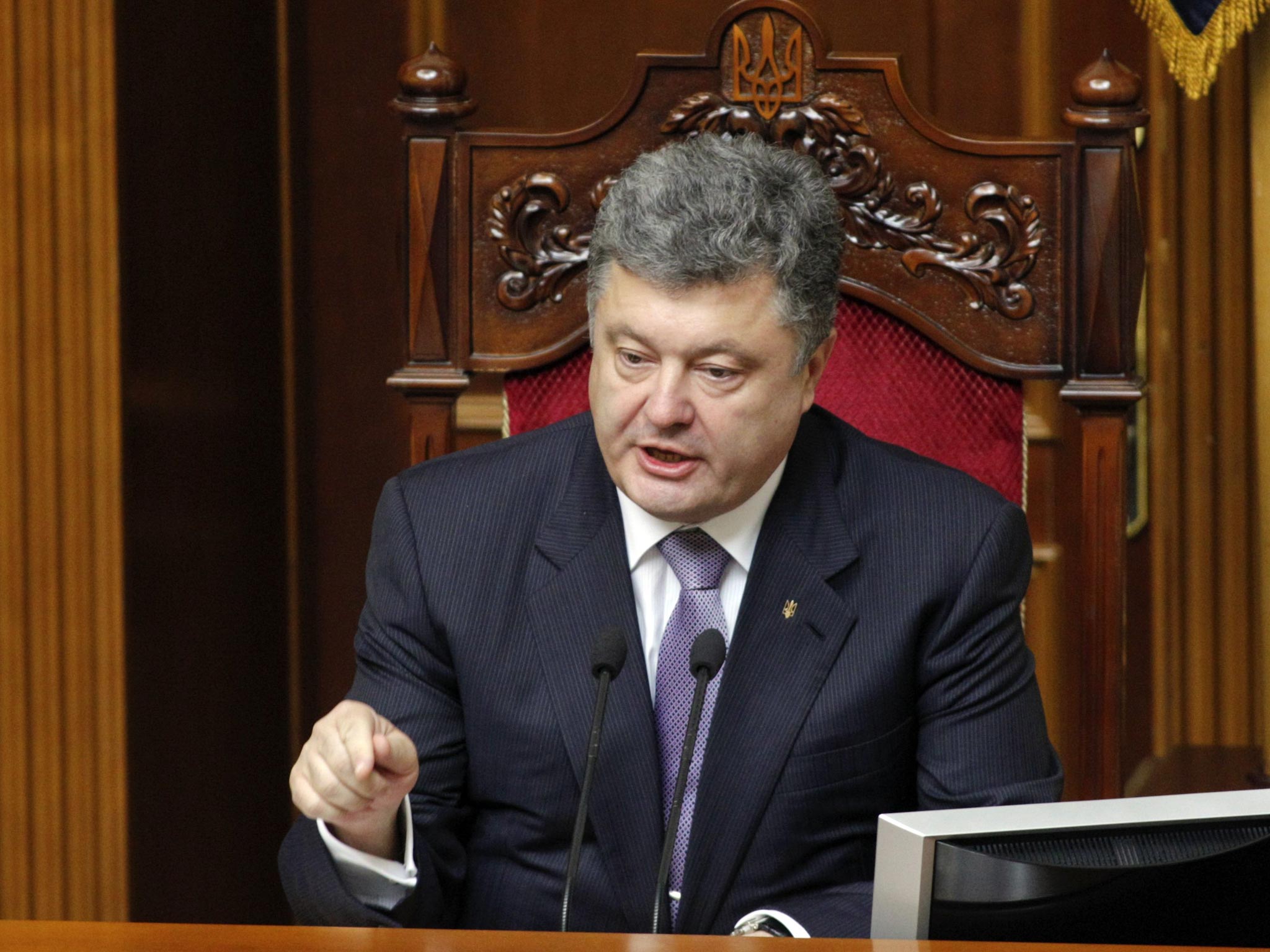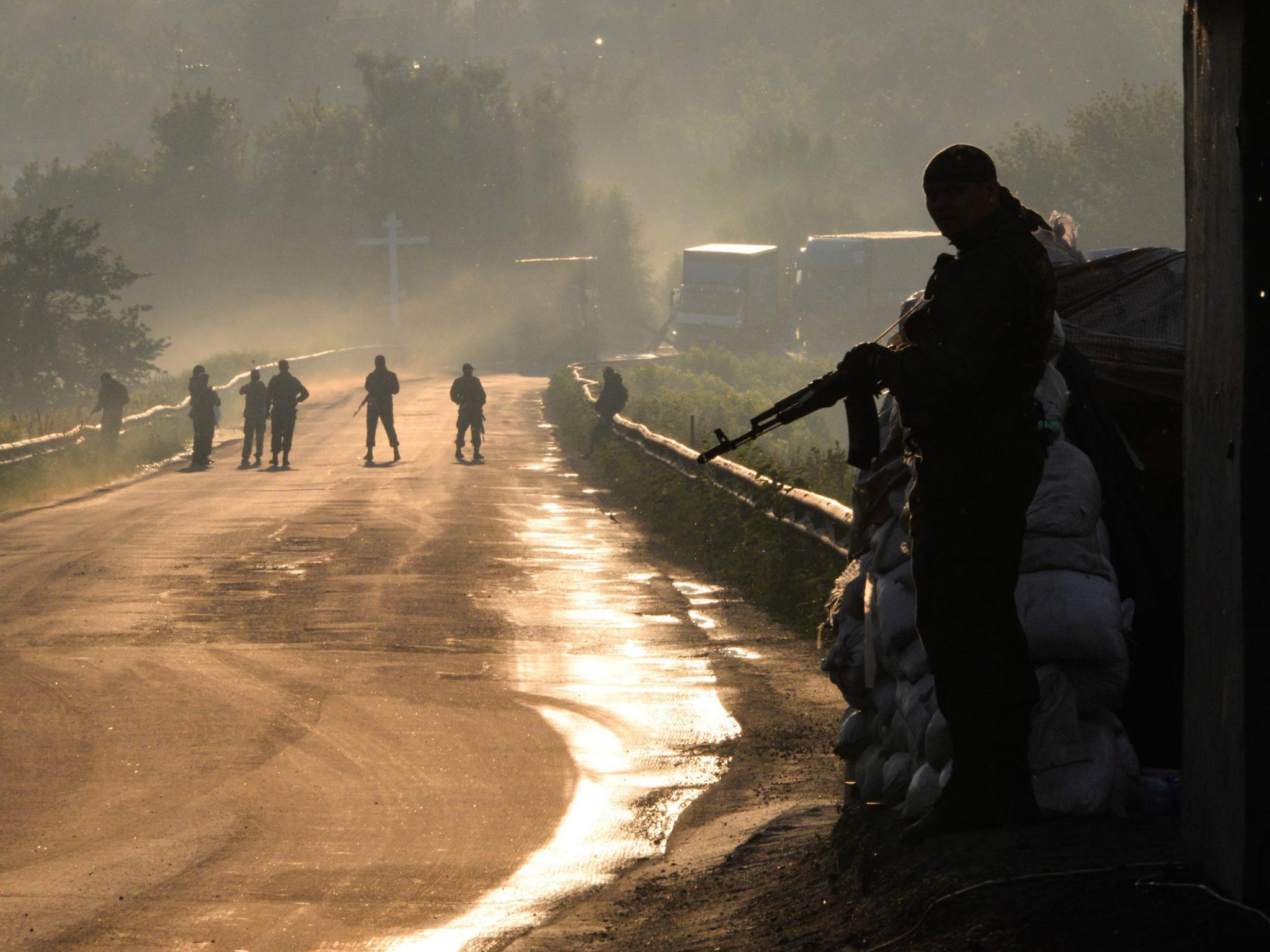Ukraine crisis: President Poroshenko calls ceasefire as Russia defends border troop movement
New President’s peace plan would create buffer zone along frontier with Russia

Your support helps us to tell the story
From reproductive rights to climate change to Big Tech, The Independent is on the ground when the story is developing. Whether it's investigating the financials of Elon Musk's pro-Trump PAC or producing our latest documentary, 'The A Word', which shines a light on the American women fighting for reproductive rights, we know how important it is to parse out the facts from the messaging.
At such a critical moment in US history, we need reporters on the ground. Your donation allows us to keep sending journalists to speak to both sides of the story.
The Independent is trusted by Americans across the entire political spectrum. And unlike many other quality news outlets, we choose not to lock Americans out of our reporting and analysis with paywalls. We believe quality journalism should be available to everyone, paid for by those who can afford it.
Your support makes all the difference.The Ukrainian President, Petro Poroshenko, ordered his troops in the east of the country to cease fire on Friday night, even as a surge in separatist violence and accusations of deeper Russian involvement in the conflict provoked another round of US sanctions.
A spokesman for the interior ministry said the ceasefire would last for a week and that Ukrainian troops would return fire only if fired upon.
Mr Poroshenko, who was elected last month, has vowed to end the armed pro-Russian uprising which has spread through key eastern industrial cities, sending Ukraine to the brink of a break-up and pummelling relations between Russia and the West.
US and European leaders claim that fighters and weapons are flooding over the border from Russia as Moscow seeks to stoke the instability to regain influence in its former Soviet territory. They have given the Kremlin until the end of the month to clamp down or face tougher economic sanctions.
On Friday the White House said it was adding seven more officials from Ukraine and Russia to a list of dozens who have had their assets frozen and are banned from travelling to the US, and pointed to reports of more military hardware coming over the border.
“We have information that additional tanks departed from a deployment site in south-west Russia,” a US official said, adding that talks with the EU about moving to the next level of sanctions – debilitating measures targeting specific sectors of Russia’s economy – had intensified.
EU foreign ministers will meet on Monday to discuss new sanctions. Mr Poroshenko is also due to update the bloc on his 14-step peace plan, which went into action on Friday after the Defence Minister told parliament the border with Russia had been sealed. The interior ministry said of the ceasefire: “This is being done so that terrorists can put down their arms; those who do not do this will be eliminated.”
Nevertheless, fierce fighting continued inside Ukraine, with the Associated Press agency reporting that at least seven troops had been killed and 30 injured in the Donetsk region, where separatists declared an independent republic shortly after taking over public buildings in April.
Vladyslav Seleznyov, a Ukrainian army spokesman, claimed about 300 separatists were killed in Friday's fighting. The figures could not be independently verified.

The separatist movement counts anti-government Ukrainians, ethnic Russians, ex-soldiers and a smattering of opportunists among its fighters, and their varying goals and allegiances have complicated efforts to find a political solution to the crisis.
Under Mr Poroshenko’s peace plan, the sealing of the border and the declaration of a ceasefire will be followed by the establishment of a buffer zone along the frontier. There will then be an amnesty for rebels who lay down their weapons and the offer of safe passage to Russian fighters who want to return home.
Mr Poroshenko has also discussed the blueprint with his Russian counterpart Vladimir Putin. Many of the proposals, such as a decentralisation of political powers and greater equality for Russian speakers, are long-standing demands from the Kremlin. Much hinges on whether Moscow finds the terms of the blueprint acceptable and uses its sway with the rebels, who have so far rejected the proposals.
Since its annexation of the Crimean peninsula in February, Russia has claimed no further interest in Ukrainian territory, and earlier this month pulled some of its troops back from the border. On Thursday, the Nato secretary-general, Anders Fogh Rasmussen, said there was evidence that Russian soldiers were regrouping near the frontier. Mr Putin’s foreign policy adviser denied these claims and said only border guards had been deployed.
Join our commenting forum
Join thought-provoking conversations, follow other Independent readers and see their replies
Comments